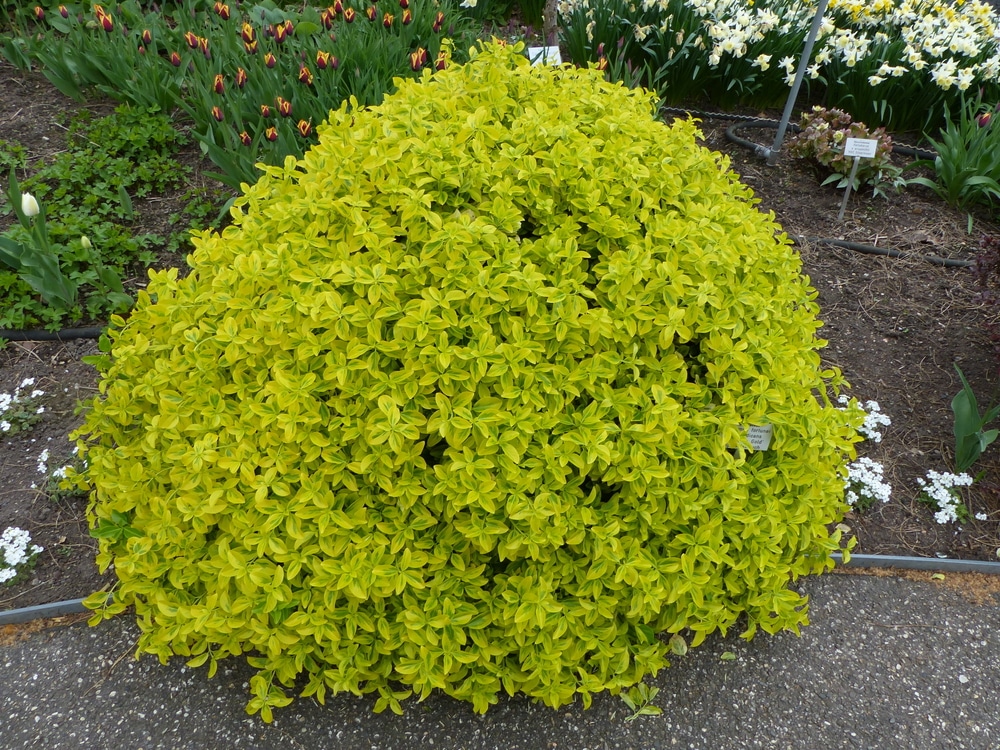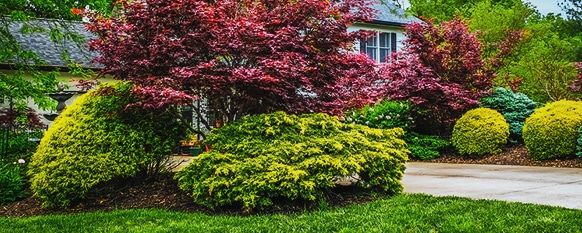Are you thinking of adding fresh plants to your home’s landscape? Putting in a new tree, shrub, or bush in your garden can provide your space with a boost of color and decoration. If you want to give your plants the best chance of survival, put them in the ground in the fall!
Shrubs are a perennial woody plant, commonly used in landscaping for their low maintenance and ornamental value. Most shrubs and trees enter a dormant period during the fall and winter, so it is best to plant around this time to let them establish themselves. This is much better than forcing them into a hot dry summer, as they just won’t have the resources to survive.
Read on for more information about the best time to plant!
If you are looking for ideas of things to plant, you may want to consider planting a blueberry bush. Not only is it beautiful, but it will yield delicious and healthy harvest!

Plant in the Fall
The best time of year to plant a tree or shrub is in the autumn. Fall planting ensures that root systems can be established before spring comes. The same can be said for most trees. They will be ready to produce new growth and flowers all summer long!
If it is currently early spring in your area, most perennial trees and shrubs can also be planted at this time. However, the best time is early-to-mid fall, after the heat of summer has gone. This gives the small tree or shrub enough time to establish a healthy root system before spring.
If you need to plant in the spring, you should aim for just after the last frost of winter. The spring is actually the recommended time of year for many trees to be planted. Check for information about your specific tree species for the best recommendations.
The cool air and warm soil of early fall give your plant roots the conditions they need for success. If planted in the summer season, the roots will usually dry up, as they only occupy the surface layer. When given enough time to establish, the roots can weather the heat of summer and pull moisture from deep below the ground.

Steps for Planting
The steps for planting a shrub, bush, or small tree are all quite similar. Again, the best time to plant is in the fall. While planting in the spring can be viable, your trees and plants will not show the same level of growth as a fall planting.
Step 1: Prepare the Hole and Dig
The planting location of your shrub is essential when it comes to the longevity and viability of the plant. Always avoid planting too close to other woody plants, as they will have to compete for nutrients. Check any other requirements for your specific plant, including sun exposure, water requirements, frost tolerance, and specific time to plant.
Once you have found your site, use a rake to remove any leaves, litter, and old mulch away from the area that your shrub will be planted. Next, dig a hole that is at least twice the size of the roots of the shrub. Once the dirt has been removed, loosen the soil around the sides of the hole to allow the plant’s rooting systems to travel easier.
Soil fertilizer is not necessary when planting in the fall season. Fertilizer can be added when the weather starts to warm and new growth will occur.

Step 2: Transplant
Now that your hole is prepared, you can remove the plant from its container. Some plants come balled and burlapped and can be planted directly in the ground. However, if the material is synthetic, make sure to remove it before planting. The synthetic material will not decompose.
Before transplanting, inspect the root ball for compacted roots or circular, container-shaped growth. If present, you may break these spots up to allow for more dispersed root growth. Do not worry about hurting the plant or its roots. If you don’t break them up, the plant will continue to be root-bound and will not reach its full potential.
You can now place your root ball in the hole, backfilling with soil to support the plant. The top of the bare root should be just below the surface of the ground. Lightly tamp down your soil to eliminate air pockets. Do not heavily compact the soil.

If you live in a place with cold winters, you may be interested in reading our article about what to do with plants in the winter.
Step 3: Water
Water the newly planted shrub, ensuring that the entire root ball is moist. If your soil settles and uncovers the roots after watering, make sure to add more soil, and lightly tamp down.
Step 4: Add Mulch
Add a layer of mulch around 3 or more inches. This could be shredded leaves, wood chips, or other organic material that you have available. Mulch helps newly planted trees and shrubs retain moisture in their root areas. It also provides a barrier against weeds, ensuring that the new plant does not have to compete for nutrients.
Tips for Raising a Healthy Bush
For the first few weeks, be sure to water your plants just about every day. After that, read the signs that your plants give you and slowly scale back your watering schedule. Once the dormancy of winter arrives, your watering schedule should be drastically reduced. When the spring warmth arrives, be sure to keep an eye on moisture levels.
You can create a fence around your new shrubs to defend against pesky animals. Too much animal activity can damage trees and the rest of your garden plants. While this usually isn’t a problem in the late fall and winter, the spring and summer animals can cause quick damage to your foliage.

Pruning a bush may help keep it healthy. For shrub-type plants, you can thin out dead, damaged, and diseased branches as often as possible. Trees will need different methods of pruning, depending on the species. Generally, fall and winter are the best times for pruning most trees.
When the summer growing season arrives this year, you can enjoy the vibrant growth and blooms from your trees and plants. You will be proud that you planned ahead and planted the previous fall! Next year, your neighbors might take note of your wisdom and do the same!


Shrubs stand out because they can stay green year-round. If you want them to grow well and flourish in the summer, the proper planting time plays a significant role. Therefore, when is the best time to plant shrubs? Grow them from September to November in the fall or January to March in the spring.